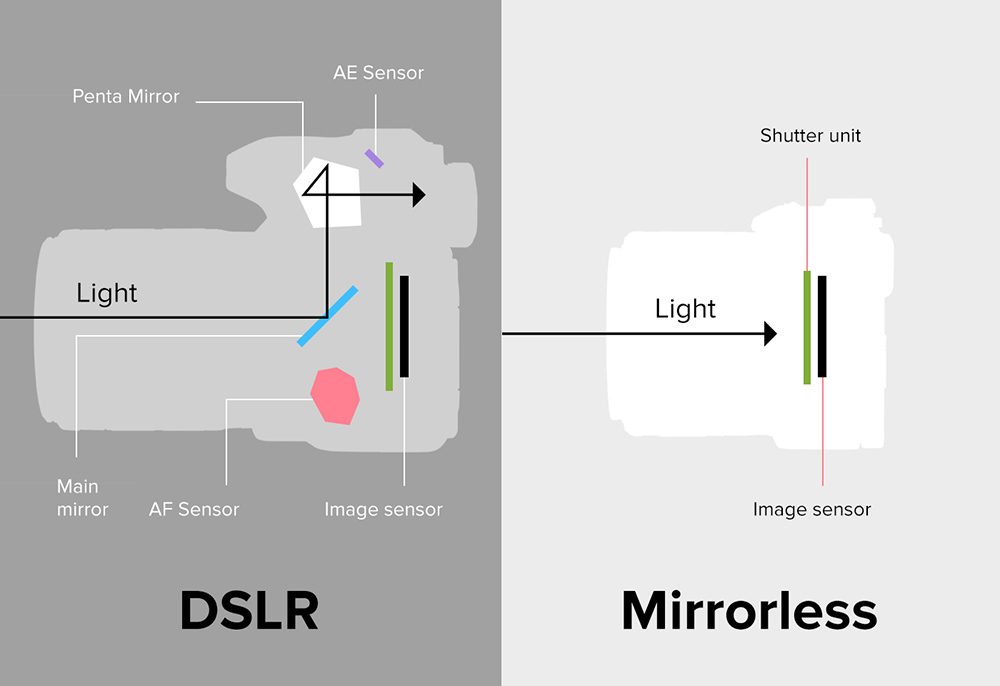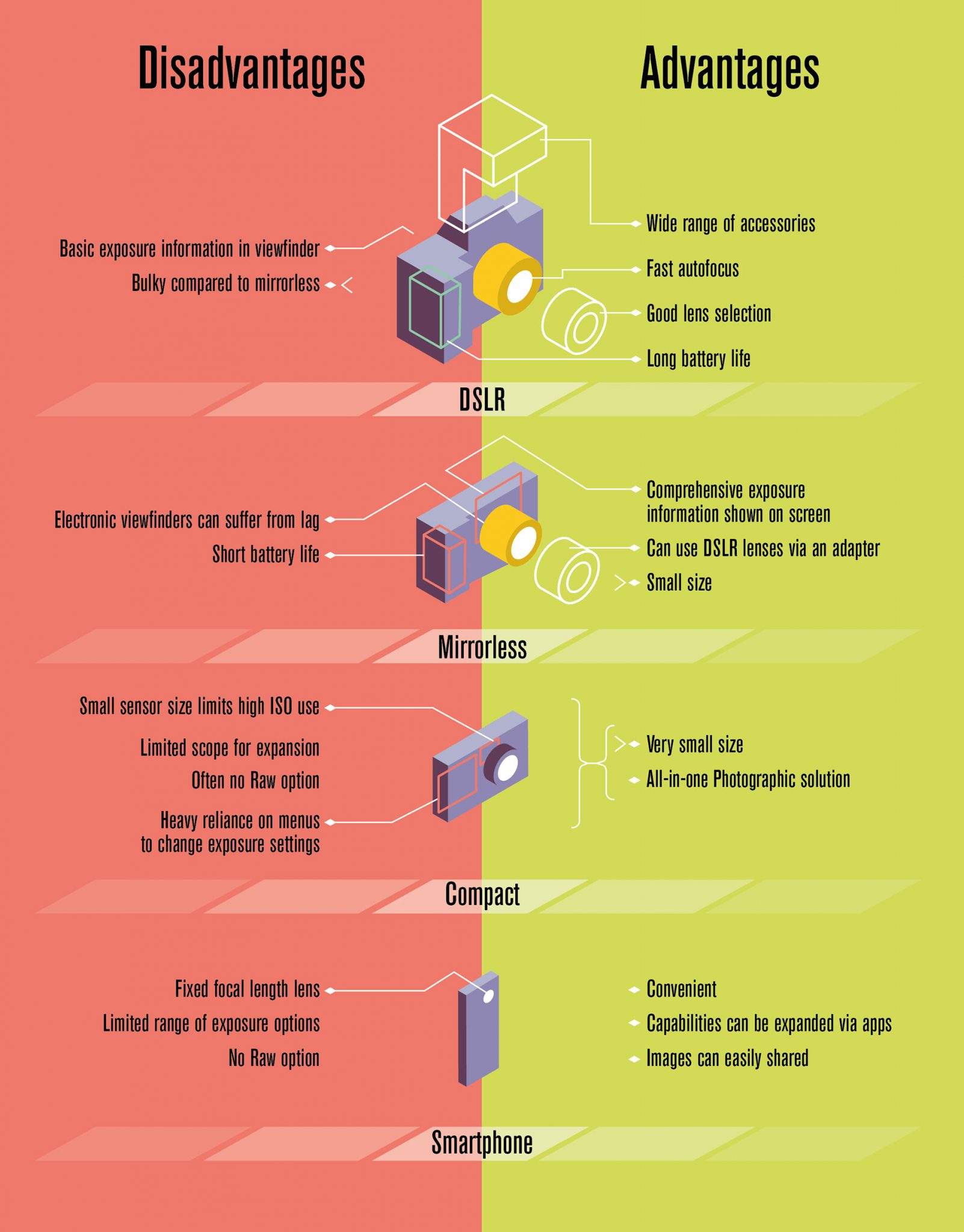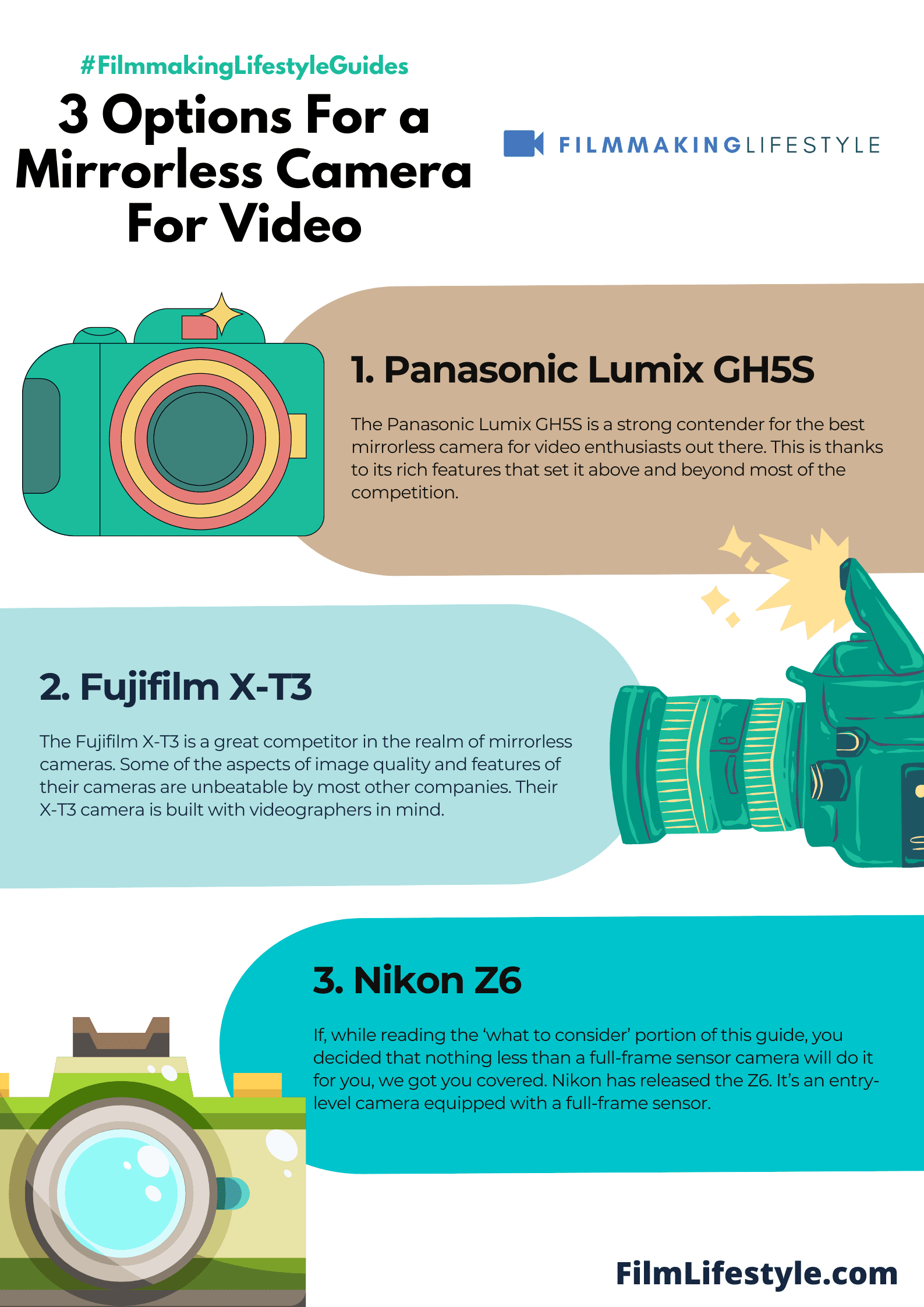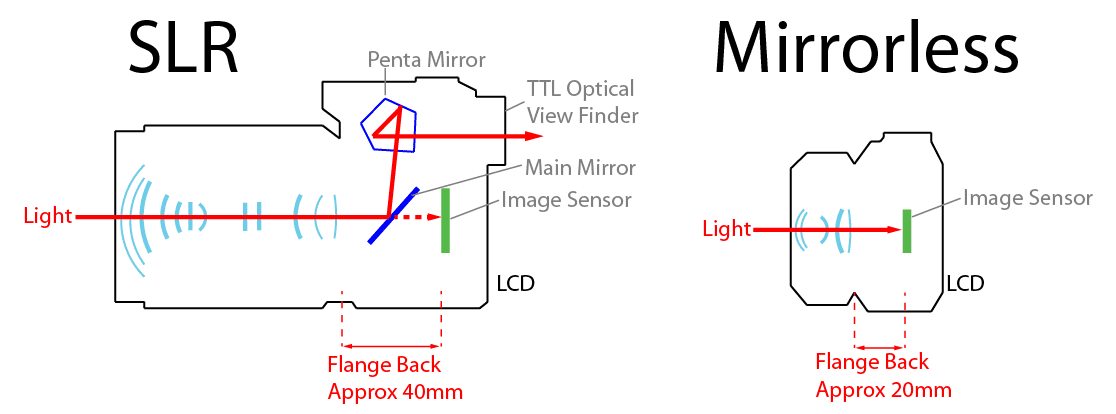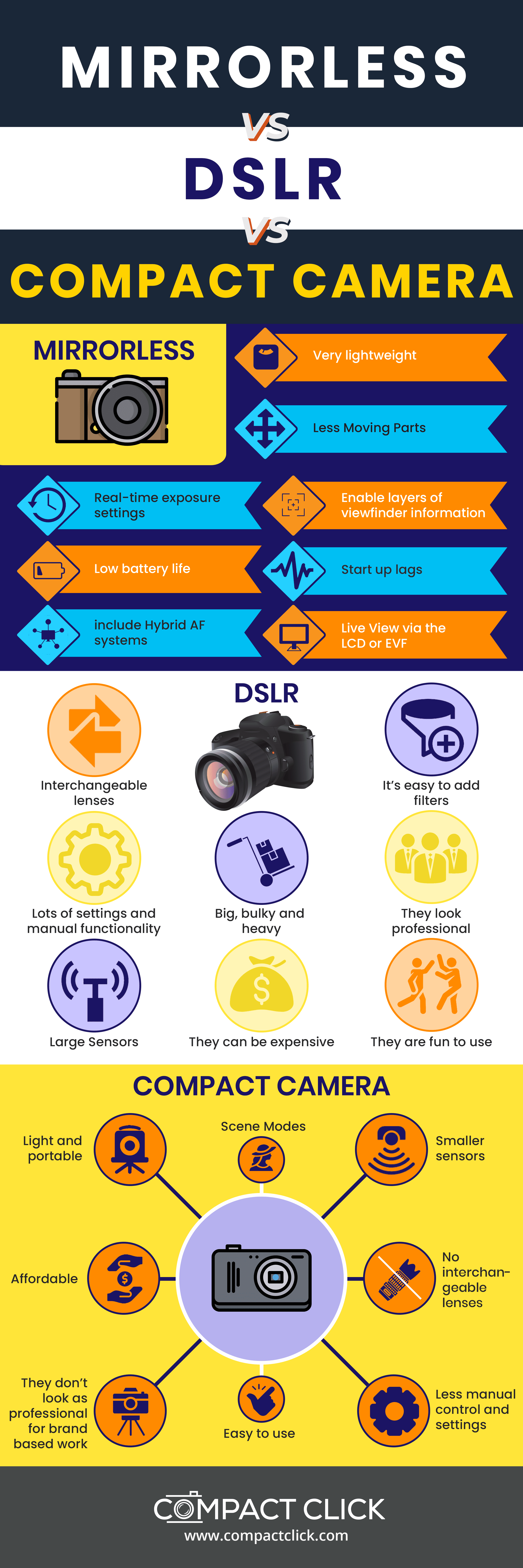Mirrorless cameras are revolutionizing photography, shedding the bulk while enhancing image quality.
They’ve ditched the traditional mirror mechanism, offering a compact alternative to the classic DSLR.
We’ll jump into how these innovative devices work, their advantages, and why they might be the perfect choice for your next photography adventure.
Stay tuned as we explore the ins and outs of mirrorless camera technology.
WHAT IS A MIRRORLESS CAMERA
What Is a Mirrorless Camera?
Mirrorless cameras are a type of digital camera that has been designed to use interchangeable lenses and small sensors.
They offer many advantages over DSLRs, which is why they’re quickly becoming more popular with photographers all over the world.
How Do Mirrorless Cameras Work?
Understanding the mechanics of mirrorless cameras is key to appreciating their impact on filmmaking and photography.
Let’s jump into what makes these cameras standout from their DSLR cousins.
At the heart of a mirrorless camera is the image sensor – always exposed to light.
There’s no mirror to flip up and out of the way when taking a photo.
This results in a lighter body and fewer moving parts.
Because the light directly hits the sensor, what we see on the electronic viewfinder (EVF) or LCD screen is a digital preview of the image.
This display comes straight from the sensor itself.
Unlike optical viewfinders in DSLRs, what you see is what you get, allowing us to make adjustments in real-time.
Mirrorless cameras focus using either contrast detection or phase detection.
Some advanced models Use a combination known as hybrid autofocus.
Let’s outline the differences:
- Contrast detection sharpens an image by maximizing contrast on the sensor.
- Phase detection measures the convergence of two light beams to quickly focus.
- Hybrid autofocus uses both for improved speed and accuracy.
Besides, the absence of a mirror allows for higher shooting speeds.
With no need to reset the mirror between shots, mirrorless cameras can capture more images per second.
This speed is invaluable for filming situations where capturing the right moment is crucial.
Mirrorless technology enables silent shooting.
We can record footage discreetly without drawing attention or breaking the natural cadence of scenes.
For filmmakers, this feature is a game-changer in quiet or intimate settings.
We must also acknowledge the size advantage.
Mirrorless cameras tend to be more compact than their mirror-equipped counterparts.
This makes them a favored option for on-the-go shooting and reduces the strain of carrying equipment during long shoots.
By eliminating the mirror assembly, manufacturers can design lenses closer to the sensor.
This often leads to better lens performance and a wider array of lens design possibilities, another plus for our cinematic endeavors.
In essence, mirrorless cameras are reshaping the way we approach visual storytelling.
Through their refined inner workings, they bring forth benefits that cater to the agility and creativity of modern filmmakers and photographers.
Advantages Of Mirrorless Cameras
Mirrorless cameras have surged in popularity due to their numerous benefits over traditional DSLR cameras.
Their innovative design offers a more compact and lightweight form factor, making them a top choice for filmmakers and photographers who are always on the move.
Thanks to their reduced bulk, these cameras are not only easier to handle for extended periods but also less intrusive, which can be crucial in street or documentary filmmaking.
The absence of a mirror mechanism has propelled the development of faster autofocus systems.
Mirrorless cameras employ cutting-edge AF technology like phase detection and contrast detection, which helps achieve razor-sharp focus at high speeds.
Especially in filmmaking, where moments are fleeting and retakes aren’t always an option, the quick and reliable AF becomes a real game-changer.
Key features that make mirrorless cameras stand out include:
- High-speed continuous shooting – capturing action sequences with precision.
- Silent shooting modes – vital for not disrupting live performances or wildlife.
In live view, what you see is what you get with mirrorless cameras.
Our ability to preview exposure, white balance, and depth of field in real-time via an electronic viewfinder or LCD screen is invaluable.
This immediate feedback allows us to make adjustments on the fly, ensuring each scene is captured just as envisioned, whether it’s for an independent film or a commercial shoot.
The electronic viewfinder in mirrorless cameras can display an array of crucial information, far beyond what any optical viewfinder in DSLRs could show.
Features such as zebra striping for exposure levels and focus peaking for pinpointing focus areas significantly enhance our ability to create well-exposed and sharply focused footage, streamlining the production process.
With these tech advancements, mirrorless cameras are not just a convenience; they’re rapidly becoming our creative partners in visual storytelling.
Compact And Lightweight Design
Mirrorless cameras have revolutionized the way we think about and handle camera gear.
Their streamlined design – the result of removing the mirror box and optical viewfinder – means we’re now working with much smaller and lighter equipment.
Shifting away from bulky DSLRs has its perks, particularly for filmmakers constantly on the move.
Mirrorless bodies are not only easier to carry; they’re also less obtrusive, making them perfect for capturing authentic, candid shots without drawing attention.
In scenarios where mobility is key, we find that mirrorless cameras give us an edge.
From intricate gimbal movements to handheld dynamic shots – the reduced weight is a blessing for sustained handheld shooting or when rigging on drones and stabilizers.
Our gear selection often revolves around the balance between functionality and portability.
With mirrorless cameras, we’re getting high-quality footage without the extra bulk:
- Enhanced portability – Greater discretion in tight spaces – Easier to stabilize for smooth footage.
also, the compact form factor doesn’t compromise on the array of features these cameras offer.
We’re accessing top-notch video capabilities, like 4K video and slow-motion capture, all packed into something that fits comfortably in our gear bag and doesn’t weigh us down.
For travel filmmakers or those of us always out seeking new shooting locations, the space-saving aspect of mirrorless cameras can’t be overstated.
Our setups are lighter, which means we can bring along additional lenses or accessories, further expanding our creative possibilities.
The sleek profile of mirrorless cameras is about more than just aesthetics – it reflects a broader shift towards efficient, agile filmmaking where being encumbered by heavy gear is a thing of the past.
We’re embracing the ease of movement and spontaneity that these cameras afford us, allowing us to craft visually compelling stories without the logistical headaches of larger setups.
Image Quality And Sensor Technology
Mirrorless cameras have revolutionized not just the shape and weight of filmmaking gear but also the quality of images produced.
Their innovative sensor technology is a beacon for filmmakers seeking both portability and high image fidelity.
Our discussions on sensor size often highlight that mirrorless cameras can house the same sizes as DSLRs.
Full-frame sensors that are typical in high-end mirrorless models deliver filmic depth of field and excellent low light performance.
Equally crucial in the quest for cinematic excellence is the sensor’s ability to process color and detail.
Advanced color science in mirrorless cameras allows for nuanced color grading in post-production, critical for the film-making process.
Here are some core benefits of mirrorless camera sensors:
- They usually feature faster readout speeds, reducing rolling shutter effects during fast pans or when capturing fast-moving subjects.
- The absence of a mirror mechanism allows for reduced vibration, enhancing sharpness and clarity.
- Enhanced autofocus systems Use on-sensor phase detection for quick and smooth focus transitions.
The pairing of high-resolution sensors with powerful image processors enables features like 4K video and slow-motion capture without compromising quality.
Such capabilities are indispensable when striving for that cinematic look and feel.
Our pursuit of creative freedom means adopting technologies that keep up with our vision.
Mirrorless cameras, with their edge in sensor innovation, are proving to be valuable allies in the hands of modern filmmakers.
They’re a testament to the ongoing evolution in digital imaging that empowers us to tell stories with visual depth and clarity like never before.
Mirrorless vs DSLR: Making The Comparison
When weighing the merits of mirrorless cameras against DSLRs, it’s vital to consider the key differences and how they affect our creative process.
As filmmakers, we often prioritize flexibility and innovation, and that’s where mirrorless systems shine.
DSLRs have been the industry standard for years.
They rely on an optical viewfinder and a mirror mechanism, which dictates their larger body size.
This traditional design boasts proven ergonomics and an extensive range of lenses and accessories.
But, mirrorless cameras are rapidly closing the gap with equally expansive lens ecosystems.
The advantages of mirrorless cameras in video production are undeniable.
They offer:
- Enhanced video quality due to superior sensor technology,
- Wider lens compatibility with various mount adapters,
- Lighter and more compact bodies for easier handling on set.
Mirrorless systems boast real-time exposure simulation and focus peaking, both critical for ensuring the desired result before hitting the record button.
In contrast, DSLRs require a separate live view mode, which can be less intuitive for filmmakers seeking instant feedback.
Autofocus in mirrorless cameras is another leap forward, with on-sensor phase detection allowing for quick and smooth focus transitions.
This feature is especially helpful when we’re working on dynamic scenes that require constant focus adjustments.
Workflow efficiency is also impacted by the choice between mirrorless and DSLR cameras.
The reduced weight and size of mirrorless cameras make them ideal companions on long shooting days, where fatigue can compromise creativity.
Coupled with modern sensors that push the limits of low light performance, mirrorless systems ensure we’re not constrained by the time of day or location when inspiration strikes.
Is A Mirrorless Camera Right For You?
Deciding whether a mirrorless camera suits your needs hinges on understanding the demands of your projects.
For filmmakers, the benefits of mirrorless technology can be particularly enticing.
The compactness of mirrorless cameras can be a game-changer for our travel-heavy projects or when working in confined spaces.
Less bulk means we can move quickly and capture shots with relative ease compared to lugging around a heavier DSLR rig.
Our investment in equipment often reflects our commitment to image quality and control.
Mirrorless cameras shine here – with full-frame sensors and advanced color science, they offer a look that’s hard to replicate with other systems.
When it comes to video, mirrorless cameras offer features that rival professional cinema cameras:
- Enhanced 4K video capabilities,
- High frame rates for slow-motion,
- Real-time exposure simulation,
- Advanced autofocus systems.
These features allow us to create visually stunning films that can stand out in an increasingly competitive landscape.
Let’s not forget, the robust lens selection for mirrorless systems means we’re not just investing in a camera – we’re investing in a versatile system that can grow with our evolving filmmaking needs.
Finally, the user experience plays a pivotal role.
Many mirrorless cameras provide clean, intuitive interfaces that help us make adjustments quickly, streamlining our creative process.
Adopting a mirrorless camera can be a transformative step in our journey as filmmakers.
It provides a platform that fosters creativity, ensures portability, and delivers professional results.
What Is A Mirrorless Camera – Wrapping Up
We’ve explored the remarkable capabilities of mirrorless cameras, underscoring their role in pushing the boundaries of image quality and filmmaking.
Their compact design paired with full-frame sensors and advanced image processors provide us with an unparalleled combination of portability and performance.
As we consider the leap to mirrorless, we’re not just investing in a camera; we’re embracing a tool that enhances our creative expression and efficiency.
Whether we’re capturing the subtleties of color in a studio or chasing the golden hour in a remote location, mirrorless cameras stand as a testament to the evolution of photography and videography.
They’re not just changing the game—they’re redefining it.
Frequently Asked Questions
What Are The Main Advantages Of Mirrorless Cameras Over Dslrs?
Mirrorless cameras offer several advantages including higher image quality, innovative sensor technology, faster readout speeds, reduced vibration, enhanced autofocus systems, and superior video features like 4K recording and slow-motion capture.
Additionally, they are more compact and lightweight, which is great for filmmaking on the go.
Can Mirrorless Cameras Handle Full-frame Sensors?
Yes, mirrorless cameras can be equipped with full-frame sensors, which provide a filmic depth of field and strong low light performance, making them ideal for professional-level image and video production.
How Do Mirrorless Cameras Improve The Filmmaking Process?
Mirrorless cameras improve the filmmaking process with real-time exposure simulation, focus peaking, advanced color science for nuanced color grading, and superior autofocus capabilities that allow for quick and smooth focus transitions.
Are Mirrorless Cameras Compatible With A Wide Range Of Lenses?
Yes, mirrorless cameras generally offer wide lens compatibility, which includes the use of adapters to fit various lenses not specifically designed for mirrorless systems, thus providing filmmakers with a versatile range of optical choices.
How Does The Portability Of Mirrorless Cameras Impact Filmmaking?
The reduced weight and size of mirrorless cameras make them highly portable, which is beneficial for filmmakers who travel or work in confined spaces.
Their compactness also enables easier handling and reduces fatigue during long shooting days, improving overall workflow efficiency.


